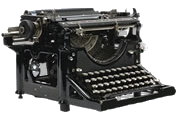Fashion Modeling in the 1940s (Coronet Magazine, 1944)
Inasmuch as this 1944 article sums up the bygone world of the New York fashion model, the terms heroin chic and bulimia are not found on any of it’s five pages (an over site, no doubt). The Forties were a time when a model would be just as likely to get a booking from a commercial artist as she would a photographer, and, unlike the Twenties and the earliest days of the Thirties, it was a time when a standardized image of beauty was well-established.
– five feet nine inches in height, weight 110 pounds, bust 33, waist 24, hips 34, blonde or a light shade of brown hair. She will have quick, clever eyes and a very expressive face.
Many of the models are bitter, unhappy girls inside. They soon grow disillusioned with their dream of modeling as a gateway to theatrical glory; they learn that their height is against them.
Read about the attack of the actress/models!
